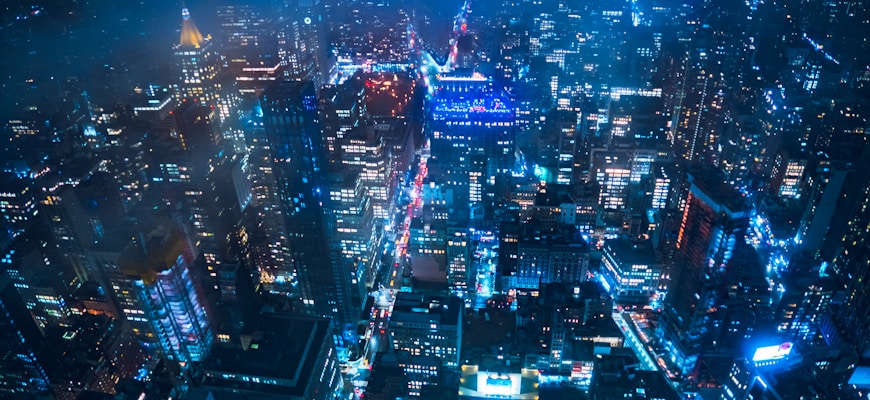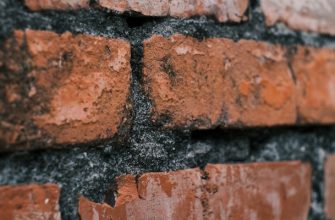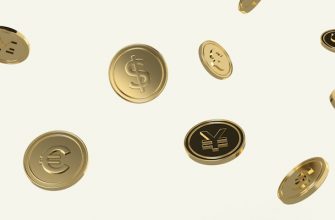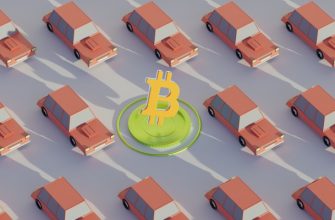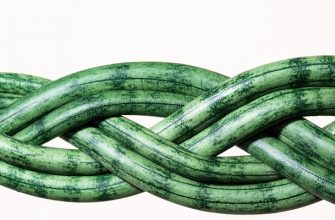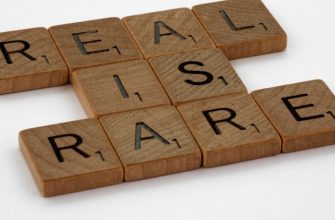- Understanding Real World Assets: Bridging Traditional Finance and Blockchain
- The Significance of RWA in Shaping Future Investment Strategies
- How Real World Assets Enhance Blockchain’s Credibility and Adoption
- Navigating the Challenges of Integrating Real World Assets into Crypto
- The Role of Regulatory Frameworks in RWA and Blockchain Investments
- Case Studies: Successful RWA Implementations in the Blockchain Space
Understanding Real World Assets: Bridging Traditional Finance and Blockchain
Understanding Real World Assets (RWAs) is essential for investors looking to bridge the gap between traditional finance and blockchain technologies. RWAs represent tangible items, such as real estate, commodities, and other physical assets, that can be tokenized on blockchain platforms. This tokenization process grants these assets liquidity and accessibility, making them attractive for diversifying investment portfolios.
The integration of RWAs into blockchain ecosystems allows for enhanced transparency and security. By using smart contracts, these assets can be managed and traded with reduced counterparty risk. This innovative approach not only streamlines transactions but also enhances trust among participants in the market.
- Liquidity: RWAs can be easily converted into digital tokens, providing investors with the ability to trade assets on blockchain exchanges.
- Accessibility: Tokenization lowers entry barriers, allowing a broader range of investors to participate in markets previously dominated by institutional players.
- Transparency: Blockchain technology ensures that all transactions involving RWAs are recorded in a secure and immutable manner, fostering trust among users.
- Lower Costs: The use of blockchain can reduce transaction fees associated with traditional finance, making investments more affordable.
As the landscape of finance evolves, the importance of RWAs in blockchain investments cannot be overstated. They not only bridge traditional and digital assets but also represent a significant step toward integrating real-world value into the ever-growing blockchain economy. Understanding the dynamics of RWAs will empower investors to make informed decisions that align with both their financial goals and the evolving technological landscape.
The Significance of RWA in Shaping Future Investment Strategies
Understanding the significance of Real World Assets (RWA) is crucial for shaping future investment strategies in the blockchain landscape. As the integration of RWAs into the blockchain ecosystem continues to evolve, investors are increasingly recognizing the potential of these tangible assets. The alignment of RWAs with blockchain technology presents a unique opportunity to enhance liquidity, diversify portfolios, and mitigate risks associated with traditional investments.
Investments in RWAs provide a bridge between the digital and physical worlds, allowing stakeholders to leverage the security and transparency of blockchain while capitalizing on the intrinsic value of real-world assets. This convergence not only fosters increased investor confidence but also drives the demand for innovative financial products that incorporate RWAs into their frameworks.
- Enhanced Liquidity: The tokenization of RWAs enables fractional ownership, allowing investors to access liquidity in markets that were previously illiquid.
- Diverse Portfolio Options: Integrating RWAs into investment strategies allows for a broader range of asset classes, reducing the overall risk of investment portfolios.
- Risk Mitigation: By investing in RWAs, investors can hedge against market volatility, as these assets often retain value despite fluctuations in digital currencies.
- Transparency and Security: Blockchain technology provides an immutable record of ownership and transaction history, which enhances trust in the investment process.
As the market for RWAs matures, the development of regulatory frameworks will further solidify their role in the investment landscape. Enhanced regulations will not only protect investors but also promote institutional participation in RWA markets, leading to increased adoption of blockchain investments. The significance of RWAs in shaping future investment strategies cannot be overstated, as they represent a paradigm shift in how assets are perceived and traded in a digitized economy.
How Real World Assets Enhance Blockchain’s Credibility and Adoption
The integration of real world assets (RWAs) into blockchain technology significantly enhances the credibility and adoption of the blockchain ecosystem. By bridging the gap between digital and physical assets, RWAs provide tangible value that can be easily understood by investors and the general public. This tangible connection fosters trust, which is crucial for the broad acceptance of blockchain solutions.
Real world assets not only represent a secure investment option but also serve as a risk mitigation strategy. As the volatility of cryptocurrencies can deter potential investors, RWAs offer a more stable alternative, attracting a diverse range of stakeholders. The presence of physical assets, such as real estate or commodities, establishes a foundation of value that supports the digital tokenization process.
- **Enhanced Trust**: The presence of RWAs instills confidence among investors, as they can verify the existence and worth of the underlying assets.
- **Greater Accessibility**: Tokenizing real world assets allows for fractional ownership, making investments more accessible to a larger audience.
- **Regulatory Compliance**: RWAs often adhere to existing regulatory frameworks, which can simplify compliance for blockchain projects.
- **Diversification of Portfolios**: Incorporating RWAs into blockchain investments enables diversification, reducing overall risk for investors.
- **Increased Liquidity**: Tokenized RWAs can enhance liquidity in traditionally illiquid markets, allowing for easier buying and selling of assets.
Furthermore, the tokenization of real world assets can drive innovation within the blockchain space. New financial products and services can emerge from the integration of RWAs, leading to enhanced market efficiency and new investment opportunities. This progression is vital for the long-term sustainability of blockchain technology.
In conclusion, the synergy between real world assets and blockchain technology presents a compelling case for increased credibility and adoption. By providing a bridge between the digital and physical realms, RWAs not only enhance the stability of blockchain investments but also pave the way for a more inclusive financial future.
Navigating the Challenges of Integrating Real World Assets into Crypto
Integrating real world assets (RWA) into the blockchain ecosystem presents a myriad of challenges that must be navigated carefully. As the demand for tokenized assets grows, understanding the complexities of merging traditional assets with innovative blockchain technology becomes critical. Key challenges include regulatory compliance, valuation accuracy, and market liquidity.
- Regulatory Compliance: The legal landscape surrounding real world assets is often fragmented and varies by jurisdiction. Ensuring compliance with local regulations is crucial for the successful integration of RWA into crypto platforms.
- Valuation Accuracy: Accurately valuing real world assets is essential for maintaining trust and transparency in the blockchain space. The volatility of cryptocurrencies can complicate this process, making it imperative to establish reliable valuation methods.
- Market Liquidity: Liquidity is vital for the success of any asset, including tokenized real world assets. Without sufficient liquidity, the market for these assets may struggle to grow, hindering investment opportunities.
Moreover, the technological infrastructure required to support the integration of real world assets into blockchain must be robust and scalable. Utilizing smart contracts can automate processes and reduce transaction costs, but the implementation of such technologies requires careful planning and execution.
Building trust within the community is another significant hurdle. Investors must be assured of the legitimacy and security of real world assets being tokenized. This can be achieved through transparent practices, thorough audits, and clear communication regarding asset backing.
In conclusion, while integrating real world assets into the crypto sphere is fraught with challenges, addressing these issues head-on can unlock new avenues for investment and innovation. The intersection of real world assets and blockchain technology holds immense potential for transforming how assets are managed and traded.
The Role of Regulatory Frameworks in RWA and Blockchain Investments
The regulatory frameworks play a crucial role in the integration of real-world assets (RWA) with blockchain investments. As blockchain technology continues to evolve, it becomes increasingly essential for regulatory bodies to establish guidelines that ensure the security and transparency of these investments. The presence of a robust regulatory environment fosters investor confidence, which is vital for the growth of blockchain investments linked to tangible assets.
One of the primary functions of regulatory frameworks is to provide clarity on the legal status of RWA within the blockchain ecosystem. This clarity helps to mitigate risks associated with investment in real-world assets, encouraging more participants to enter the market. Moreover, regulations can enhance the overall integrity of blockchain investments by establishing standards for asset tokenization, custody, and trading.
- Investor Protection: Regulatory measures help safeguard investors from fraudulent practices, ensuring that blockchain investments in real assets are legitimate and secure.
- Market Stability: A well-defined regulatory framework contributes to market stability by minimizing volatility and ensuring that all participants adhere to the same rules.
- Innovation Facilitation: Clear regulations can stimulate innovation in the blockchain space by allowing businesses to explore new ways of integrating RWA into their offerings without fear of legal repercussions.
- International Standards: The establishment of global regulatory standards can facilitate cross-border investments in RWA, promoting a more interconnected and accessible investment landscape.
In conclusion, the role of regulatory frameworks in the realm of RWA and blockchain investments cannot be overstated. By providing a structured environment, these regulations not only protect investors but also promote the responsible growth of blockchain technologies. The synergy between real-world assets and blockchain investments is poised to enhance the overall investment landscape, making it increasingly vital for stakeholders to engage with these regulatory developments.
Case Studies: Successful RWA Implementations in the Blockchain Space
The integration of Real World Assets (RWA) into blockchain technology has paved the way for innovative solutions that bridge the gap between traditional finance and decentralized systems. Several successful implementations have demonstrated the profound impact of RWA on blockchain investments, showcasing its relevance in enhancing liquidity, security, and trust.
- Real Estate Tokenization: One notable case study is the tokenization of real estate properties. Companies have successfully converted physical assets into digital tokens, allowing investors to buy fractions of properties through blockchain. This approach has democratized access to real estate investments, enabling a diverse range of investors to participate in markets that were previously inaccessible.
- Commodity Trading: Another successful implementation involves the trading of commodities such as gold and oil on blockchain platforms. By representing these physical goods as digital tokens, businesses have improved transaction efficiency and reduced costs, making it easier for investors to trade and own valuable resources securely.
- Supply Chain Management: The use of RWA in supply chain management has also shown promising results. Companies leveraging blockchain technology to track and verify the provenance of goods can enhance transparency and accountability. This has led to increased consumer confidence and streamlined operations in various industries.
- Art and Collectibles: The art world has seen a surge in RWA applications with the emergence of NFTs (non-fungible tokens). Digital representations of artworks and collectibles have allowed artists to monetize their creations directly while providing collectors with verifiable ownership, thus revolutionizing how art is bought and sold.
These case studies illustrate the versatility and potential of RWA within the blockchain ecosystem. By aligning physical assets with blockchain technology, businesses not only enhance investment opportunities but also foster a more inclusive financial landscape. The successful integration of RWA signifies a significant step toward a future where blockchain investments are more tangible and accessible to a broader audience.

